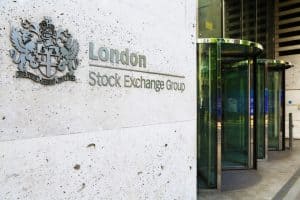 The London Stock Exchange Group’s (LSEG) multilateral trading facility (MTF) Turquoise has made a series of substantial changes to its rebates structure, in the wake of declining activity across lit trading venues in Europe.
The London Stock Exchange Group’s (LSEG) multilateral trading facility (MTF) Turquoise has made a series of substantial changes to its rebates structure, in the wake of declining activity across lit trading venues in Europe.
According to the latest Turquoise tariff schedule, due to come into effect on 2 September, the level of rebates for liquidity providers will be significantly increased under a new negative fee structure on the lit order book, as part of a major overhaul of Turquoise’s Liquidity Provision Scheme (LPS).
The new structure will see the most active trading members on Turquoise receive rebates of 0.29 bps, far greater than the previous negative fee of 0.14 bps for top-tiered liquidity providers. Aggressive order fees, which were halved to 0.15 bps last year, will also return to 0.30 bps for all participants, and the smaller passive fee of 0.05 bps for non-LPS firms has been removed.
The LPS has also been extended to a per-market basis, rather than European-wide, and market makers will be tiered on the percentage of passive share of activity, rather than on absolute numbers of notional traded. The number of tiers under the LPS has also been expanded and the threshold lowered from 1% of share of activity to 0.5% in order to bring more proprietary and systematic trading firms in scope of the scheme.
Speaking to The TRADE about the revised rebate structure, Scott Bradley, head of sales and marketing for London Stock Exchange cash markets and Turquoise, said that the expanded criteria and lower threshold will ensure firms that are strong in certain markets can continue focusing on providing liquidity to the Turquoise market.
“We are aiming to create an LPS environment which offers an attractive tiering structure to encourage as much liquidity provision as possible through active posting activity,” Bradley said. “By changing the LPS from one that was based on notional traded, to a relative tier structure, extending those tiers out, and increasing the negative fee payable to those who are helping improve the market, we should see more competition and bring more participants under the umbrella of the scheme.”
The latest series of changes to Turquoise’s tariff structure follows the MTF’s move last year to remove rebates for non-LPS participants in response to growing buy-side sentiment and concerns about potential conflicts of interest around rebates, particularly in the US. The new changes, made as lit MTF activity continues to decline across Europe under MiFID II, aim to attract broker smart order routers and drive competitive liquidity provision through active posting on the market with appealing negative fees and tiering.
“We took the position last year that we wanted to be the first MTF to proactively remove rebates from non-LPS activity,” Bradley added. “Over the past couple of years, and under MiFID II, lit MTF activity across the market has declined. With the latest tariff structure, we are creating an enhanced LPS to improve the overall lit market on Turquoise, tightening spreads and improving the market for smart order routing.”
Despite MiFID II aiming to increase the level of trading in Europe that takes place on lit trading venues, volumes on MTFs have steadily declined since the regulation was introduced. At the same time, trading on dark venues has increased, and according to statistics from TABB Group, recently surged to the highest level since MiFID II was enforced.